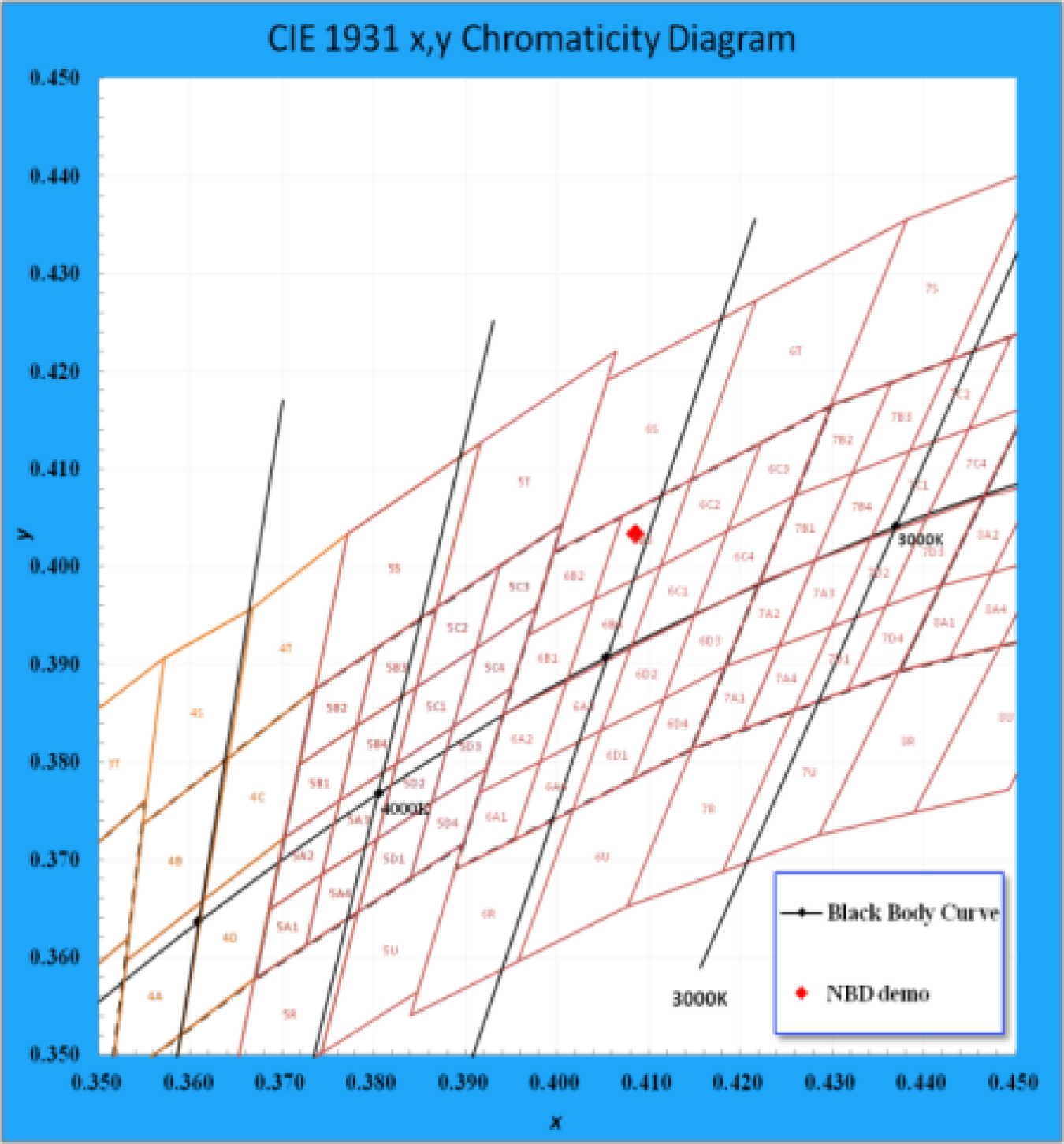
Cree novel narrow-band downconverters resulted in an efficacy of >145 lm/W at 35 A/cm2 and room temperature, with a CCT of 3510K and a CRI of 82.
The most common method of white-light generation in LEDs is by green, yellow, and red phosphor downconversion. But the fact that red wavelengths fall at one end of the visible light spectrum poses an obstacle to the efficiency of red downconverters, because too broad an emission range will result in a certain amount of light that gets wasted by falling outside the useful visible spectrum. With the help of DOE funding, Cree is developing novel narrow-band downconverters (NBDs) in the red range, which can be efficiently “pumped” by blue (~450 nm) LED chips. These NBDs have a narrow (<35 nm) emission peak, which is significantly lower than conventional red phosphors (~100 nm width). NBD downconversion efficiency is tracked as quantum yield, which is the ratio of emitted photons to absorbed photons. When quantum yield is sufficiently high and is combined with a narrow peak profile, a superior luminous efficacy compared to conventional red phosphors is achieved.
In addition to frequent NBD quantum yield measurements, Cree has routinely employed white LED light-engine efficacy measurements to quantify the net benefit of efficient and narrow red downconverters. These evaluations typically consist of combining conventional green/yellow phosphors with red-emitting NBDs to create warm-white color points in the range of 3000–3500K and with a CRI of 90 or higher.
For purposes of benchmarking to the DOE warm-white efficacy baseline (35 A/cm2 at room temperature), Cree has also synthesized and tested NBDs that, by reducing their emission wavelength, result in a CRI of ~80. For example, NBDs with a red emission peak width of ~30 nm were combined with conventional green/yellow phosphors and pumped by a production Cree blue LED. By doing so, Cree achieved a room-temperature, “instant-on” efficacy of >145 lm/W at a color temperature of ~3500K and 82 CRI. Further improvements in warm-white efficacy are expected via use of blue chips with higher power-conversion efficiency, red-emitting NBDs with higher quantum yield, and refinement in light-engine design to reduce light absorption. (September 2016)
Return to Research Highlights.

